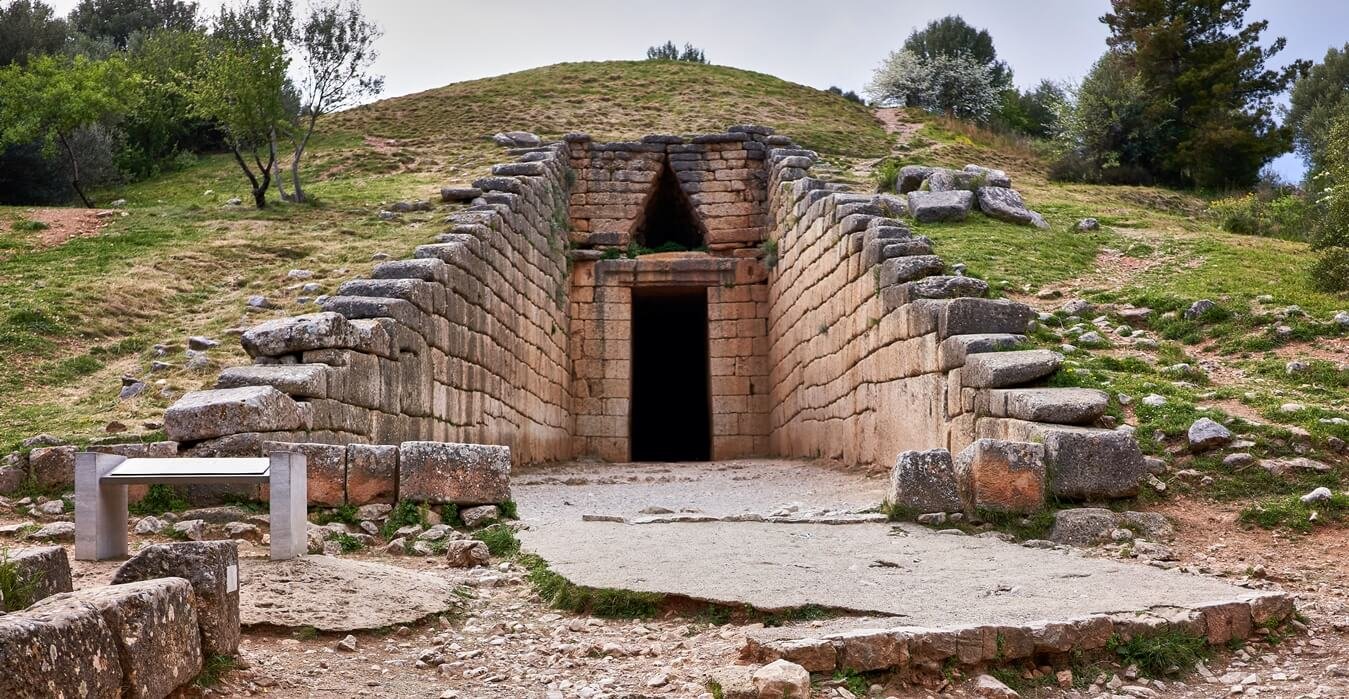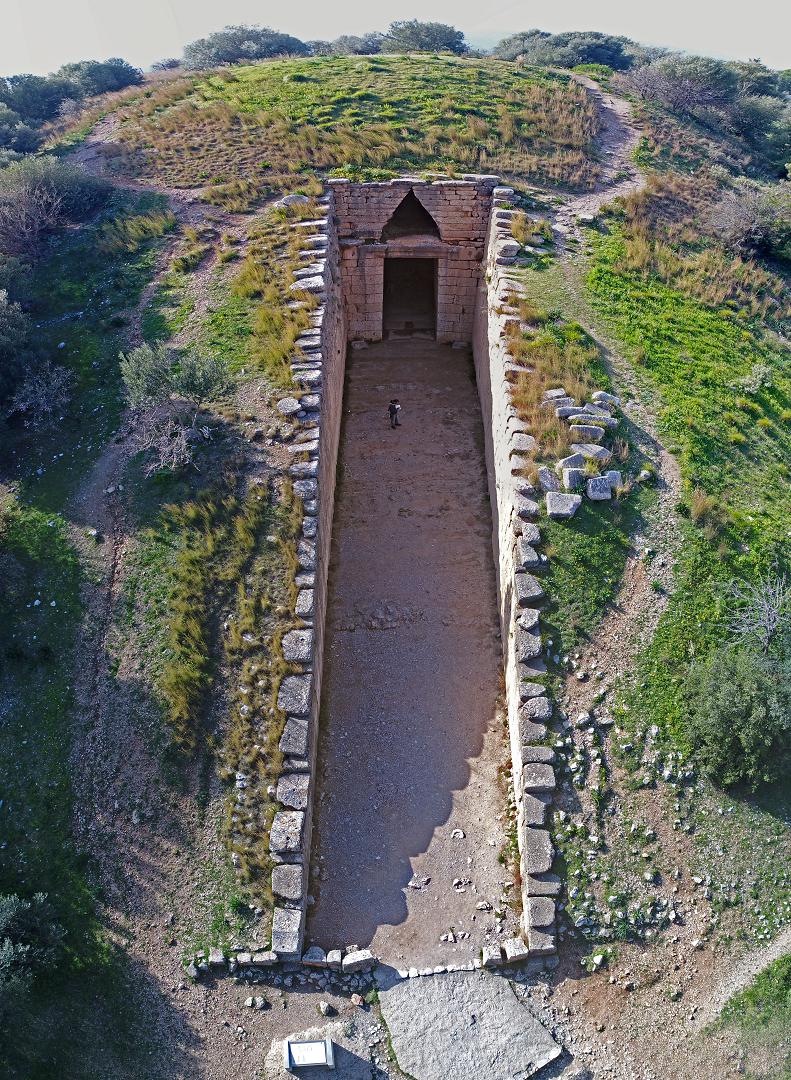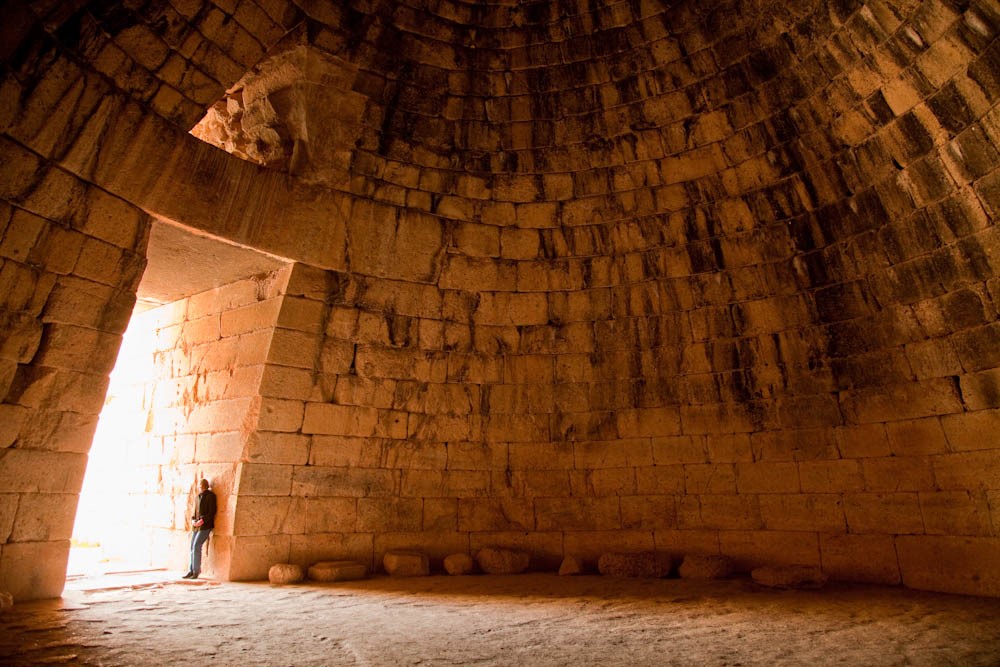The Treasury of Atreus, often referred to as the Tomb of Agamemnon, is one of the greatest architectural achievements of Mycenaean civilization, standing as a lasting testament to its ingenuity and power. Located in Mycenae, Peloponnese, Greece, and dating to around 1250 BC, this grand tholos tomb—featuring a unique, beehive-shaped chamber carved into the hillside—represents the zenith of Mycenaean architectural ambition. Although the tomb’s exact occupant remains a mystery, its scale and complexity suggest it was constructed for a highly influential figure, possibly a ruler like Atreus or the legendary Agamemnon, known from Greek mythology as a leader in the Trojan War.
Architectural Marvel and Construction Techniques
From above, the Treasury of Atreus reveals its monumental proportions, with an entrance once hidden beneath a vast stone mound, or tumulus, designed to blend seamlessly into the surrounding landscape. The entryway, known as the dromos, is a long, stone-lined corridor leading to an imposing facade that would have initially displayed decorative half-columns and intricate reliefs, enhancing the grandeur of the approach. The entrance itself features a massive lintel stone, weighing roughly 120 tons, a marvel of engineering prowess that speaks to the capabilities of Mycenaean builders.

The tomb’s interior dome, created using a corbelled construction technique, is a masterpiece of ancient engineering. Each stone layer is set slightly inward from the layer below, forming a high, arched dome that required no mortar to support itself. At 13.5 meters (44 feet) high and 14.6 meters (48 feet) wide, this dome was the largest in the ancient world and held the record for centuries, showcasing both the technical expertise and aesthetic vision of Mycenaean architecture. The smooth, rounded interior would have left a lasting impression on visitors and enhanced the acoustics within, making it a fitting space for honoring the dead.
Symbolic Significance and Burial Customs
The Treasury of Atreus stands as a powerful example of Mycenaean burial customs, in which elaborate tombs functioned as both resting places and displays of social status. The Mycenaeans buried their elite with an array of grave goods, including weapons, jewelry, and other valuable items, underscoring the wealth, rank, and beliefs in an afterlife. Though many original treasures were lost to looting, ancient sources and archaeological evidence confirm that tombs in Mycenae once held exquisite items, including the famous “Mask of Agamemnon” discovered in a nearby grave circle. The practice of furnishing tombs with gold artifacts and elaborate goods highlights the Mycenaean view of death as a journey for which the elite required prestige and protection.

Legacy and Influence on Later Architecture
The architectural innovations found in the Treasury of Atreus had a lasting impact on later Greek and Roman builders. The corbelled dome, though not continued in classical Greek architecture, demonstrated an early method of spanning large spaces that later cultures refined into the true dome, which became a staple of Roman architecture. These architectural advancements highlight the Treasury of Atreus as both a monumental tomb and a precursor to structural techniques that would shape Western architecture.

Enduring Symbol of Mycenaean Power
Today, the Treasury of Atreus remains one of the best-preserved Mycenaean structures, drawing visitors and scholars who seek to understand the artistry, cultural sophistication, and power of the ancient Mycenaean world. Situated within the archaeological site of Mycenae—once a hub of Greek civilization—the tomb serves as an enduring link to the grandeur of a bygone era. As one of the Late Bronze Age’s most significant architectural and cultural relics, the Treasury of Atreus continues to captivate, offering a glimpse into the sophistication of a society that laid the foundation for Greek civilization.

